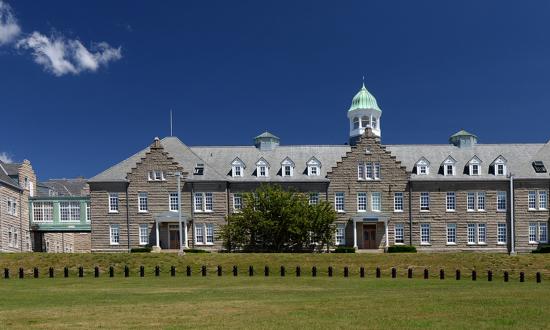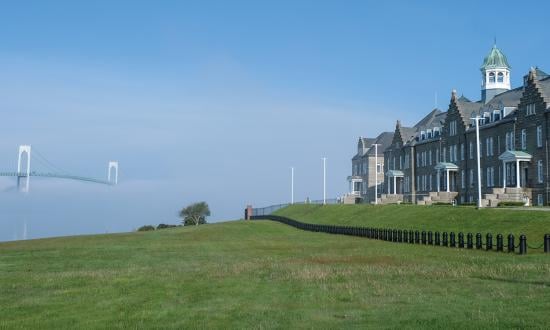It is clear that change is needed in Navy professional military education (PME). In response to then–Secretary of Defense James Mattis’ criticism of PME in the 2018 National Defense Strategy, the Undersecretary of the Navy commissioned a study of Navy PME that reported out in December 2018. Entitled Education for Seapower (E4S), it had a number of recommendations, including the establishment of a Naval University headed by a three-star officer who would also function as President of the Naval War College (NWC). The position would alternate between Navy and Marine Corps officers. There would also be a Chief Learning Officer. The report makes other recommendations, most of which deal with educational policy and the attendant process of management. One, however, recommends policies that would require future flag officers to attend an in-residence PME course.
Beyond those recommendations, the study offers a useful observation: “Vigorous and transformative connections amongst education, research, science and technology, simulation and war-gaming, operational testing and Fleet exercises have never been more important.” Indeed, but can the Navy—and especially its war college—achieve those connections? Barring the arrival of a particularly determined and visionary NWC president, structural obstacles will make significant adaptation challenging.
Accreditation
The first structural obstacle is accreditation, both for Joint Professional Military Education (JPME) and master’s degrees. Each credential is essential to an officer’s promotion potential and cannot be discarded in the name of clearing the decks for a new warfighting curriculum. The Joint Staff instruction on joint education (OPMEP) contains specific learning objectives that must be met. While there is more flexibility in the accreditation of a master’s degree, the subjects that must be addressed in a classified warfighting course are mostly outside recognized academic discipline boundaries. Thus, credentialing is a major source of inertia.
Curriculum Architecture
The second obstacle is the architecture of the current curriculum. The same three core courses are taught to both the senior and junior classes, distinguished by emphasis rather than intent. The sequence of the courses is staggered during the academic year, with the senior class taking National Security Decision Making in the fall, Strategy and Policy in the winter, and Joint Military Operations in the spring. At the same time, juniors receive Strategy and Policy in the fall, Joint Maritime Operations in the winter, and Theater Security Decision Making in the spring. Since the same faculty teaches both junior and senior levels, no alteration to the course sequence is possible without hiring additional instructors. Thus, changes can only be made to individual seminars within the courses, and no prerequisite relationship among the courses can exist because Navy students can take them in any order.
Foreign Students
The third obstacle is the enrollment of foreign students, who have been integrated into the U.S. seminars for several decades. While this is a massive benefit for global engagement, it means the courses must remain unclassified. While an occasional classified seminar could be conducted during periods when foreign students are on program visit travel, the adoption of a rigorous and coherent warfighting course cannot be established under the current approach to foreign student education.
Teaching Faculty
The fourth obstacle is the teaching faculty. Roughly half of faculty members are civilian academics who are required to possess a security clearance to teach at the NWC. However, they are experts in traditional civilian academic disciplines such as history and political science, not technical warfighting subjects. They are of high quality and the core of the NWC’s reputation for academic rigor, but the needs of civilian academics—a tenure system and a rigid rank and promotion system, for example—can be at odds with government employment structures and the needs of military and retired military faculty. In addition, the current faculty have been teaching through seminar discussion and lecture for the past 50 years and so are deeply invested in that methodology.
Lack of Demand
A fifth obstacle is lack of any demand from the fleet or motivation from the Bureau of Naval Personnel. A Center for International Maritime Security (CIMSEC) post by Dmitry Filipoff on how the Navy forgot to fight argues that a tight deployment schedule, demands for administrative efficiency, and lack of a compelling naval threat have created a fleet that does not know what to ask for in terms of knowledge and skills for warfighters. The few advanced research programs (Halsey and Gravely Groups, usually with 12–15 students each) graduates do possess such warfighting knowledge and skills, but there are too few to open the collective eyes of the fleet to what is possible.
Academic Quality
A sixth factor is the academic quality of the NWC program. Since the “Turner revolution” in 1972, the NWC has enjoyed the reputation as the most rigorous of the service colleges and the best institution of its kind in the world. However, the NWC is not mechanically linked to Navy officer development like the Army schools at Leavenworth, Kansas, and Carlisle, Pennsylvania, or the Air Force’s at Maxwell Air Force Base are to their respective services. Instead of being based on a specific need in the fleet, the NWC’s raison d’etre is based on providing quality background education for officers. Thus, its justification for being is self-referent; education is good and the NWC provides good education. If academic quality is the reason for existing, then any change that might threaten the college’s reputation is bound to be opposed by the faculty and leadership.
Too Many Topics
An eighth factor is the sheer number of subjects stuffed into the curriculum. The NWC bragged in the E4S study that the NWC provides a two-year master’s degree in ten months. This dense packing results not only from JPME requirements, but also from the historical Navy attitude that officers only need one shot at PME. If that is the case, then they must get exposed to as many of the issues they could face as possible. Having participated in years of curriculum development sessions, I know how hard it was to cut anything and how easy it was to stuff something new into the course. Of the three courses, Strategy and Policy has the best approach, resolutely maintaining a one-case-per-week pace, but even there students must “leapfrog”; devoting less attention to the cases between those in which they must prepare a paper to present. The combination of a one-shot policy (which seems to be changing a bit) and curriculum stuffing make introducing significant curricular change difficult at best.
Looking to the Future
All these factors add up to considerable structural and bureaucratic inertia. It is virtually impossible for the NWC to effectively adapt to evolving fleet needs or even to ask what it should do to meet those needs. When significant outside change has forced itself on the NWC, the answer has been to create a new wing, such as the College of Maritime Operational Warfare, that was established to support the emergence of the JFMCC as the Navy’s operational level command-and-control organization. None of this is to say that the Naval War College is anything but a high-quality academic institution; rather, it asks whether what the NWC is doing so well is the right thing to do. Part III will consider what the right thing might be.






